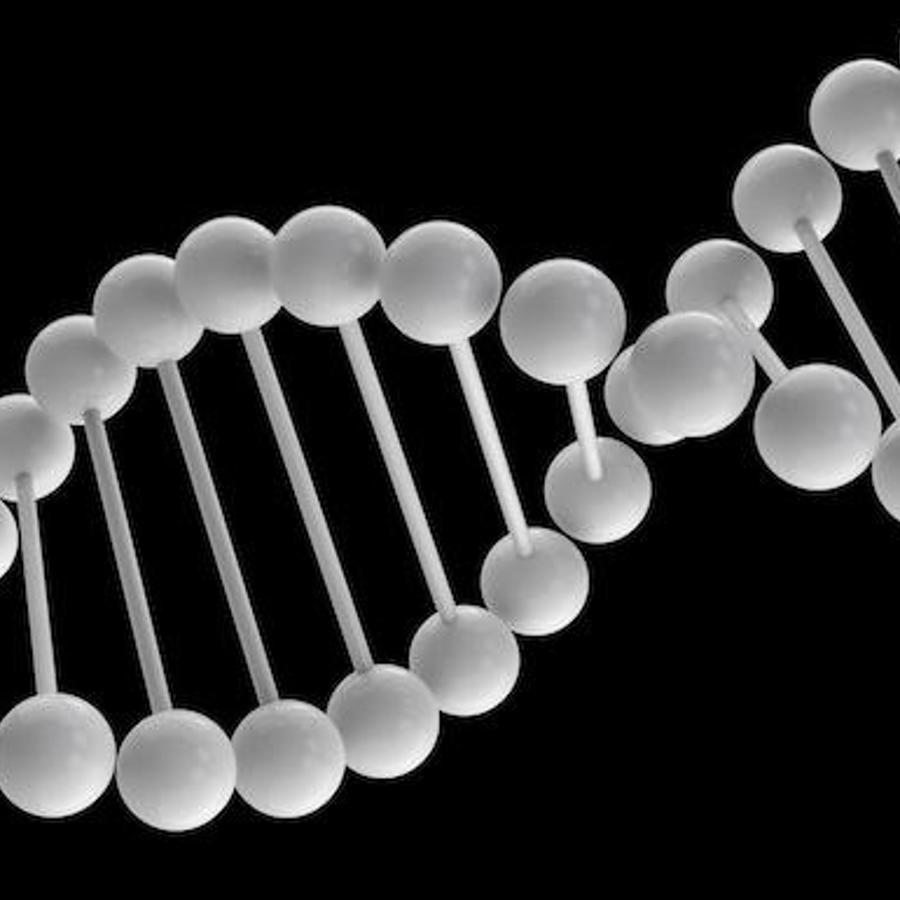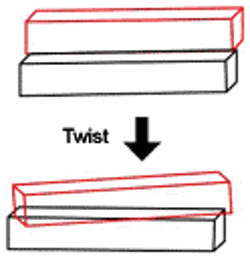
Why is DNA shaped like a spiral?
May 3, 2005

- Related Topics:
- DNA basics,
- Molecular biology,
- Editor's choice
A high school student from Australia asks:
"Why is DNA shaped like a spiral?"
Almost everybody who talks about DNA can tell you it is double stranded. And that it forms a twisted ladder or a double helix. But few people can tell us why.
DNA is a spiral for a number of reasons that have to do with what it is made of. Let's dig deeper, break open the DNA and figure out why it is put together in that shape.
DNA has three parts — sugar, phosphate and bases that are linked together chemically in a particular way. Surprisingly, a big part of what makes DNA a spiral has to do with how well each part dissolves in water!
The sugar molecule is like the sugar we use in our foods. To sweeten our coffee or lemonade, sugar has to dissolve in water. When something can dissolve in water, it is called "water-soluble" or hydrophilic.
Phosphates aren't as well known as sugars but they are really important for our body. They are also used in baking mixes, fertilizer, and lots of other things. To be used in these ways, phosphates need to be able to dissolve in water too.
Okay, the sugars and the phosphates are water-soluble and so are called hydrophilic molecules. What about the bases?
The bases, the famous A, G, T, and C's that you've probably heard about, hate water. They are not water-soluble — they are hydrophobic.
What happens to these molecules when you put them in water? Something similar to what happens when you mix oil and water. All the oil droplets will pool together and self-associate and not blend with the water.
But most of the space in the cells is filled by water. How are these hydrophobic or water-insoluble bases going to exist in the cell?
They become water-soluble once they attach to a sugar and a phosphate to form a "nucleotide", the building block of DNA. To avoid water, the bases have to stack themselves in the center, while the sugar and phosphates stay outside (see 1).

But if the bases just stack themselves, this will still leave space between the bases through which water can sneak in (see 1). This space needs to be covered up.
One obvious way to cover up this space is to bring in another chain to cover it up forming a straight ladder (see 2). This is one of the reasons why DNA is double stranded.
This still doesn't take care of the holes between the bases. One solution to get rid of the 'holes' is to skew the ladder to one side (see 3). We can think about this as turning a ladder into a staircase.
It turns out that although the skewed ladder closes the 'holes', it introduces a new problem. In this arrangement, neighboring atoms bump into each other.
To avoid bumping into each other, the staircase has to twist a little bit. This turns our staircase into a spiral staircase. This extra twist at the end is the reason for the helical shape.

Phew! You'd think something as elegant and beautiful as the famed double helix would be easier to explain but it's not.
Read More:
- Understanding DNA: the molecule & how it works by Chris R. Calladine et al., Elsevier Academic Press, 2004.

Author: Dr. Rama Balakrishnan
When this answer was published in 2005, Rama was a Scientific Curator in Mike Cherry’s lab in the Department of Genetics. Rama wrote this answer while participating in the Stanford at The Tech program.
 Skip Navigation
Skip Navigation
